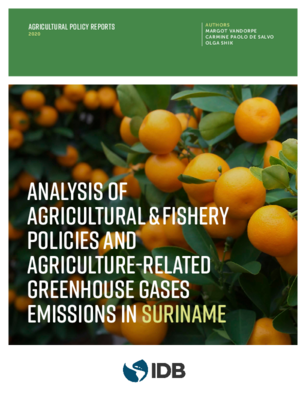Analysis of Agricultural and Fishery Policies and Agriculture-related Greenhouse Gases Emissions in Suriname
Date
Dec 2020
The agriculture and fisheries sectors account for 9 percent of Surinames GDP. Transition to a modern and innovative agri-food system is among the goals of Surinames government. Surinames agricultural policies include a combination of trade regulations, budget support, and direct participation in agricultural production by the state-owned companies. In 2016-2018, high inflation and currency depreciation impacted agricultural producers and consumers, while the budget funds for support to agriculture were substantially cut. In 2018, the annual value of support to individual producers in Suriname was SRD $267 million, or 16% of total farm receipts. This figure reflects strong market price support to livestock producers at the expense of consumers, while rice producers receive disincentives due to agricultural policies. Between 2015 and 2018, support to general services for agriculture, the most efficient way to promote innovative development, decreased from 44% to only 6% of the total support to the agricultural sector. The fisheries sector was mainly supported through the fuel tax concessions. The amount of the general services support to fisheries was less than the cost of the fishing licenses. While agriculture contributes 19% to the Surinames greenhouse gas emissions, the study found that agricultural policies do not favour climate-affecting activities in agriculture.




